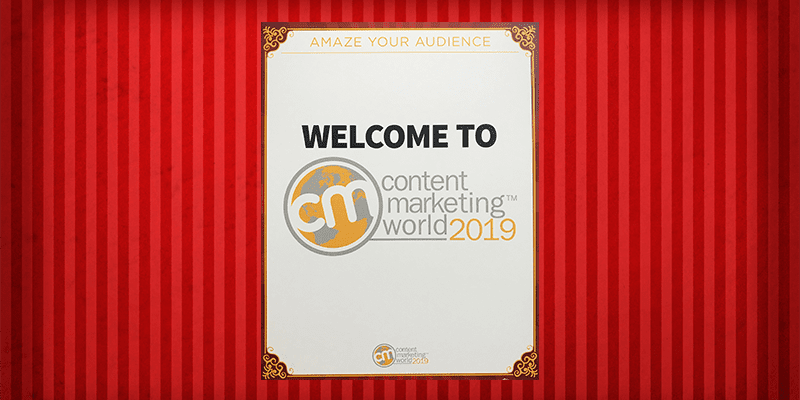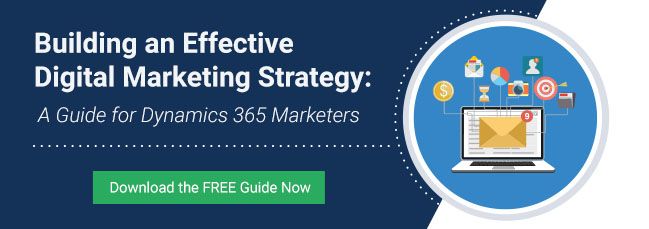“Ladies and gentleman, prepare to be amazed!” Are these words you might hear at a circus? Yes. But they’re also ones that should set the stage for your audiences as they consume your content. That idea is the inspiration behind this year’s Content Marketing World theme – Amaze Your Audiences. I had the pleasure of attending the annual world’s largest gathering of content marketers last week in Cleveland, Ohio. Here are nine of my biggest takeaways from Content Marketing World 2019, so you can put them to work in your own content programs:
1. Stop trying to do and succeed at everything. Joe Pulizzi, who as founder of the Content Marketing Institute has been called The Godfather of Content Marketing, opened the first full day of the conference with a memorable keynote on the laws of content marketing as we prepare to move into a new decade. He dubbed one of these, “The Law of Ryan Seacrest.” Pulizzi asserts that while Ryan Seacrest can do many different things very well, we are not Ryan Seacrest. As marketers, we are spreading our content energy too thin. Instead of participating in every new channel or tactic that comes along, Pulizzi explains that we need to place heavy bets on our winners and eliminate what isn’t working. We need to build our audience in one or two successful areas and then branch out to others. This sentiment was echoed in breakout sessions as well, with many marketing experts touting the power of not doing everything, but rather doing one thing great.
2. Sell yourself internally. In that same keynote address, Pulizzi also expounded on the one thing missing from content marketing today – “we aren’t selling it hard enough.” Pulizzi challenged the audience to, “Sell internally. Never stop. Never.” It is our responsibility as marketers within our individual organizations to demonstrate what we are doing with our content marketing programs and teach the value of content marketing internally. Without this constant internal education, you risk internal audiences misunderstanding what you are trying to accomplish and, in the worst-case scenario, killing it off entirely. What this process looks like will be unique to each organization; the important part is that you have a process.
3. Let go of vanity metrics. There was lots of talk at Content Marketing World 2019 about letting go of our attachment to vanity metrics in order to realize real success with our content. Best-selling author Scott Stratten perhaps put it best in his keynote session when he made the point that the metrics that matter are the ones that matter to you. He used the example of a video clip where he shares his thoughts about why older generations don’t like millennials. The clip went viral, garnering more than 3.2 million views but netted zero new inquiries for Stratten’s speaking business. By contrast, he included the same clip in his demo reel and it only received 4,000 views, yet it brought in 14 new leads for speaking engagements, so he deemed it a greater success. As marketers, we should challenge ourselves to find the right metrics for our businesses. Aim to be impactful, not viral.
4. Slow down. In a fast-paced marketing world, no one ever really tells us to slow down. But that’s exactly what author and Chief Content Officer of MarketingProfs, Ann Handley, declared in her Content Marketing World session that we all should do. She explained that we shouldn’t seek to slow down in our entire content marketing process, but rather we should slow down where it matters the most – building one-to-one relationships with our audiences. Handley explains that, “the most efficient isn’t always the most effective.” And that it isn’t enough for our audiences to trust us; they need to like us too. We create this affinity by taking a slower, more deliberate approach to our content and how it builds lasting customer relationships over time.
5. Be authentic. In her talk, Handley used an example of the El Paso Zoo and their Valentine’s Day promotion where they invited people to name a Madagascar hissing cockroach after an ex significant other or spouse. These bugs would then be fed to the zoo’s meercats on Valentine’s Day. The campaign was wildly successful, and this small zoo found themselves using unfamiliar tools in their marketing efforts. In one Facebook Live video, the on-camera talent oriented the camera the wrong way and appeared sideways on the screen. And yet, no one offered anything other than helpful hints and love for the campaign because they could see the authenticity of their efforts. It was unscripted and imperfect and thus more relatable, which Handley calls a content superpower. Speaker, author and CEO Ron Tite also emphasized the importance of authenticity in his talk about disruptors and how marketers can distance themselves from the establishment with imperfection.
6. Understand your impact. “I have to bring back fantastic content for my audience or die trying.” Those are the words of actor, writer and musician Henry Rollins when describing in his keynote a trip he took to Pakistan and the extraordinary civil unrest that occurred by chance while he was there. While we may not risk our lives to create content, Rollins contends that we need to bring that same level of passion and always think about our impact on those who consume our content. He says that we should not take ourselves seriously but take our audiences seriously and that we should, “Do things that are really, really good for all those people we are never going to meet.” We achieve this by making content that is compelling, information-rich and seeks to do good.
7. The funnel is dead. There’s been buzz brewing about this in marketing circles for some time, but it has now reached a fever pitch. The sales funnel as we know it is gone and what it has been replaced with largely depends on who you ask. My favorite version of the not-funnel at Content Marketing World came from author Andrew Davis. He refers to the customer journey as the Loyalty Loop, which focuses on fixing what Davis sees as the two biggest problems with the funnel: it’s linear and it relies on raising awareness. He asks, “What if we use the customers we’ve got to get the customers we want?” He challenges the audience to build an experience that “transforms doubters into believers.” This puts retention center stage for all of us.
8. Research is your secret weapon. Journalists know that research is essential for telling great stories. And although your stories may be published on a corporate website or newsletter instead of a newspaper, the importance of research isn’t diminished. In her breakout session on video marketing, Nicole Jolly, creator and host of True Food TV, explained how she used research to set her content apart. While she may have had a story in mind when she approached a piece of how chickpeas grow, for example, she let her research such as interviews with farmers take her down the path of the actual story rather than the one she thought she knew. Mindy Kaling – actor, writer, producer, author, director and Content Marketing World 2019 closing headliner – also discussed the importance of research when it comes to hitting a wall creatively. She advised the audience to research, but not copy, the competition and take in as much content as you can to break out of a creative rut.
9. Own your approach. In her interview-style keynote, Kaling emphasized the importance of doing work that resonates with who your brand is. She said, “Whenever I’ve tried to copy anyone else or go into someone else’s lane, I’ve always failed.” She explained that your audiences will be able to clearly see that you lack the passion for the project, which means they will too. When told about Henry Rollins’ belief that content should do some good in the world, Kaling responded with her approach as a content creator: “I do stuff because it’s funny and my friends like it.” She also challenged us as fellow creators to “move us forward” with the work that we do. Whatever your approach, recognize that everyone has a different one and own yours wholeheartedly.
Happy Marketing!









